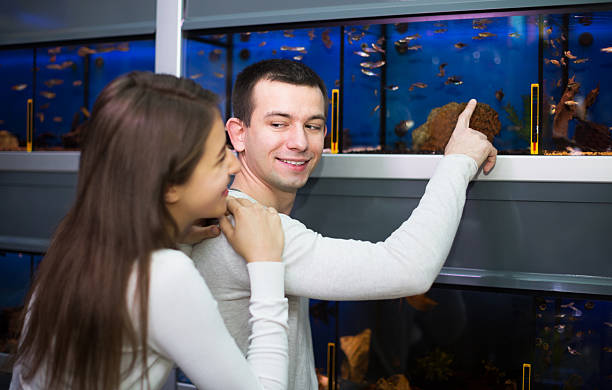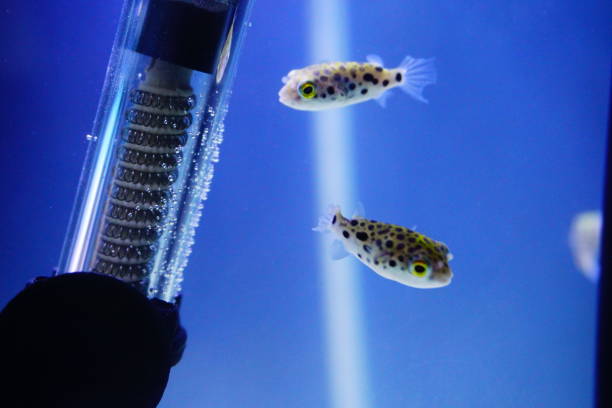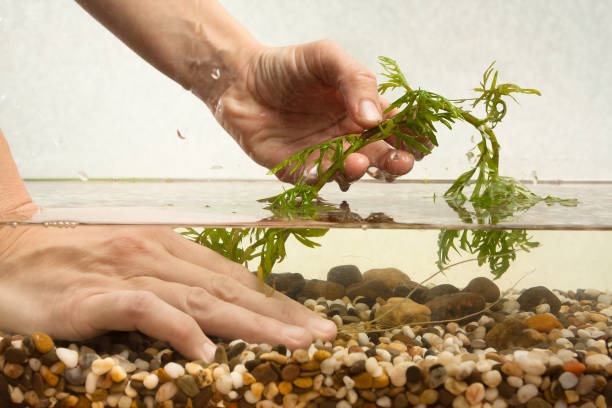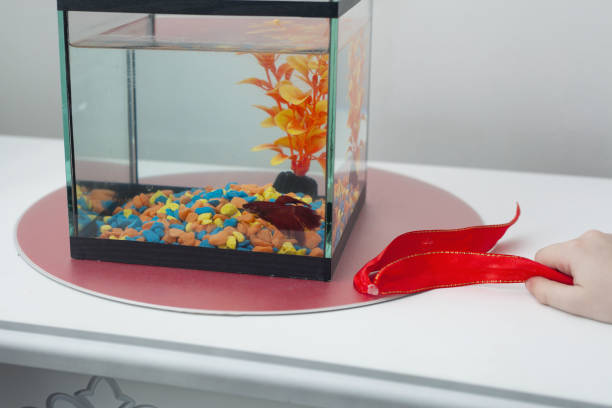Betta Fish Tank Setup Guide
The first thing you’ll need to do is choose a tank. It’s important that the tank is big enough to give your Betta plenty of room. It should also have a lid and a stand that can hold its weight.
You should also get a filter that doesn’t create strong currents, and a heater to keep the water temperature warm. You’ll also need some decorations, like rocks and plants.
Choosing a tank
Choosing the right tank is crucial to your Betta’s health. You want a tank that is at least 5 gallons – the bigger, the better. This will give your betta more room to swim around and explore its environment. It will also allow for impressive aquascaping features.
The tank should also have a filter, but be careful in selecting one. A betta’s long fins make it difficult for them to swim in strong currents, so look for a gentle filter. It should also have a heater as Bettas are warm water fish.

Choose a tank that has hiding spots and caves to provide your betta with an environment that mimics its natural habitat. You should also avoid decorative pieces that have sharp or pointed edges, as these could snag on your betta’s fins. Finally, you will need to choose a substrate that is suitable for your aquarium and make sure it is thoroughly rinsed before adding it to the tank.
Choosing a filter
Choosing the right filter is important because bettas are sensitive to strong currents, which can cause fin rot. You want a filter that can handle at least five times the volume of water in your tank each hour. It’s also a good idea to get a heater since bettas are tropical fish and need warm water.
A filter that includes biological filtration is best for bettas. This is because the bacteria in your filter break down harmful fish waste (ammonia) into nitrite and then nitrate, which are less toxic. You can also use what’s called a ‘fishless cycle’ or a ‘biological enhancer’, which is a bottle that contains beneficial bacteria to help kick-start the nitrogen cycle in your aquarium.
Avoid using decorations with sharp edges as they can tear or snag your betta’s fragile fins. Additionally, it’s important to make sure the filter’s output current is low enough or that you can disperse it to prevent stress.
Choosing a heater
Betta fish are tropical, meaning they’ll need a heater in their tank. You should get a fully submersible heater that can keep water between 78 and 80 degrees Fahrenheit. Look for one that comes with a thermostat so you can monitor the temperature easily.
When choosing a filter for your aquarium, opt for one that’s at least four times larger than the tank size. This will ensure the water doesn’t get contaminated with too much bacteria and will also create an optimal current speed for your betta fish.

Be sure to check that your filter has an adjustable flow setting, since bettas are sensitive to strong currents. Also, if you plan to add decorations to the tank, make sure they aren’t places that could snag or tear your betta fish’s fins. Lastly, don’t fill your tank to the top; bettas use their labyrinth organ to process air in addition to their gills, and they don’t like to be in small spaces.
Choosing a thermometer
Betta fish are stunning with their vivid colors and graceful fins. They deserve a home that will allow them to thrive and display their beauty. Unfortunately, many bettas are kept in tiny plastic bowls, barely surviving and living a miserable life. You can change this by giving your betta a large tank that is the right size for them and providing them with the ideal environment.
You will also need a filter, a heater, and some decorations. Choose a tank that has room for a heater because bettas are tropical fish and require warm water to thrive. A heater keeps the water between 78 and 80 degrees Fahrenheit. You should also purchase a thermometer for the tank to easily monitor the water’s temperature.
If you are using tap water, you should get a dechlorinator to remove the chlorine from the water. Then add the water to your tank and add a plate to keep the gravel from moving as you pour the water in.
Choosing gravel
Bettas originate from Thailand where they inhabit rice paddies, slow-moving streams and large puddles. To recreate this habitat in your tank, you will need to add gravel to the bottom. The best choice is small gravel that’s smooth and rounded. This will prevent your betta from getting caught on the gravel edges as they swim around. It also helps to promote a healthy tank ecosystem because beneficial bacteria can grow on the gravel’s surface. If you decide to use live plants (or fake ones), you will need two inches of gravel to ensure they root.

Once the gravel is in, you can fill up the rest of the tank and install the filter. Before you turn on the filter, put a plate on top of the gravel to prevent it from moving as you pour water. Make sure the filter is installed correctly before you add your betta fish.
Adding plants
A well-stocked aquarium makes a beautiful centerpiece for your home. It will also give your betta a safe, stimulating environment that mimics its natural surroundings. But remember that Bettas are delicate, and long, sharp decorations can tear their fragile fins. Avoid using anything with sharp edges or pointy tips in your aquarium.
You can add live plants to your tank. They can help create a more natural micro-ecosystem, while also filtering the water and adding oxygen. Some good choices include java fern, anubias nana, and marimo balls. You should add at least two inches of gravel so that the plants can root. You should also choose a tank that has an integrated heater and filter.
A quality filter should have a slow current. This is better for bettas, as they do not like fast currents. It is a good idea to get an aquarium test kit so you can check the water’s pH, ammonia, and nitrate levels regularly.

